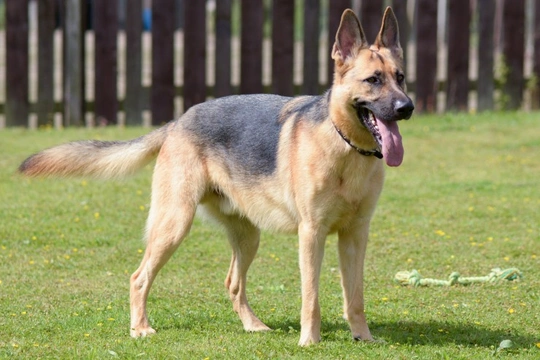
Can you understand what your dogs ‘wags’ mean?
To see your dog’s tail wagging is one of the pleasantries of owning these wonderful animals – but wagging at you, is not necessarily the same as when he wags at other dogs or members of the animal species, or even people.
Wagging is a method of communication and displays a huge range of emotions that your dog is feeling towards the recipient. It’s not always joyful and in some cases, it is the precursor of a potentially combustible situation. Reading what’s behind the wag is often helpful to an owner who could then diffuse any combative actions. The ‘wag’ can tell you exactly how your dog is feeling at that moment in time.
Not all dogs’ wags are the same, and it can be dependent upon breed, size of the tail and how they carry themselves. Primarily their tails are used for balance during flight, and for dogs that are essentially water lovers, it can act as a form of rudder, just as a boat would do.
A word of warning – a wag is not always a sign of a friendly dog. The initial wag merely means that ‘he is open to suggestions’, i.e. he is waiting to check out what is actually going on before he interacts. This becomes even more difficult to interpret, particularly with dogs that have been docked. Trying to determine what a little stub on the backside of a dog means, is a virtual impossibility!
Wagging tails are a physical mode of activity but should be connected to general posturing and other signs, such as expressions in the face and panting or ‘smiling’. When your dog’s brain sends out messages, it sends them to the whole body, not just one part, but the first discernible point of how they are feeling, will be the wag.
‘Best wag in the world’
Undoubtedly, what every owner finds charming is the ‘uncontrollable’ wag, where your pet is just so excited about the thought of interaction that he can hardly control his body! The wagging will go through the entire body and most likely your dog would be ‘smiling’, panting with excitement and even making cute whimpering noises. The tail will be making strong sweeping motions, and the body virtually rocking (some dogs will do this to music as they find it exciting!). This will often occur when you return home or participate in exciting pursuits that they really love.
A close family friend or relative can also evoke this reaction as they are familiar to them, or ‘their chums’, that they get on with on their everyday walks. It only happens when your dog is entirely in his comfort zone and receptive, and no sign of potential danger to him.
The confident wag
A dog that is confident of his surroundings and indeed about himself, will have a high tail stance when wagging, demonstrating his lack of fear and great enthusiasm for what he is about to meet or do. Even though the tail is held high, it should be relaxed and certainly not stiff and erect without the sign of a friendly wag. The higher the tail, the more emotive your dog is.
A frightened, timid or unsure dog will carry their tails low as they may find a situation intimidating. This frequently occurs in smaller dogs who may also shake and potentially bark as a warning sign to other dogs and people. You could call it ‘retro-aggression’, purely as they use this as a method of defence in what they have interpreted as a dangerous situation.
The ‘tip of the tail’ wag
One to take caution over. Look at the position of the dog’s tail – if it is up high but only the tip is wagging, or it is curled right over the back could mean that there is a high level of interest, but not necessarily of a friendly nature. Interaction is about to take place that could be combative and certainly unfriendly. Take your dog away if either he or what he is facing could result in problems.
The stiff and slow wag
There are potential problems here as this demonstrates a level of hostility and uncertainty of what to do next. Almost certainly this is not a friendly action from a dog. Best to remove your dog from this situation.
The ‘tucked under’ tail
A dog with a tucked under tail could be feeling anxious, upset and other negative emotions that need to be turned around in a calm and relaxed way. If a dog demonstrates this, invite them gently to say hello, but don’t make big moves to pet and console them, as any huge gestures could evoke negative reactions. Gentle stroking is the way forward to put them at ease, before you embark on full-blown petting.
Is your dog a ‘leftie or a rightie’?
It’s a scientific fact that in humans, the left side of the brain will show different emotions to that on the right side. Recent research by scientists demonstrate that this is the same for dogs – different sets of emotions are displayed by a tail that tips to the left or to the right.
If a dog is wagging over to the left, it means there is anxiety present in either them or an approaching dog. If they wag to the right, this is generally a ‘happy’ sign. This method of wagging can be subtle to your eye, but your dog will definitely pick up on it.
Whilst it can be difficult to interpret the different wags that dogs use for communication, really get to know your dog and take a look at his wags when out walking. It really is worthwhile.



